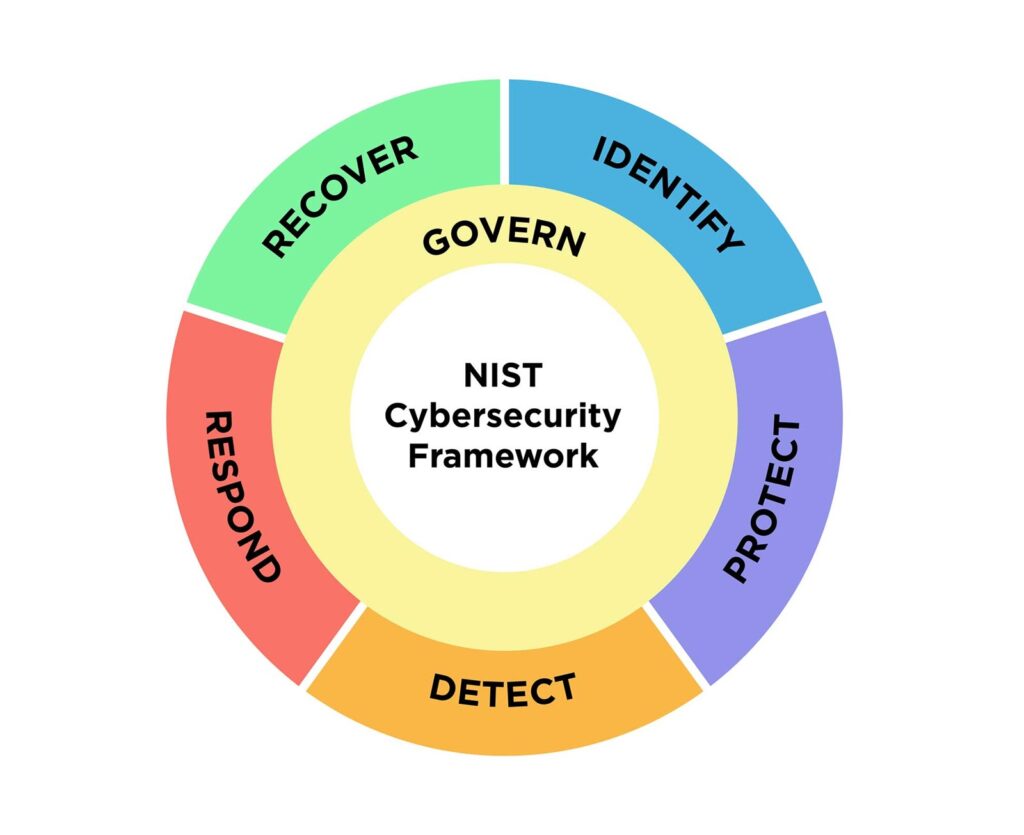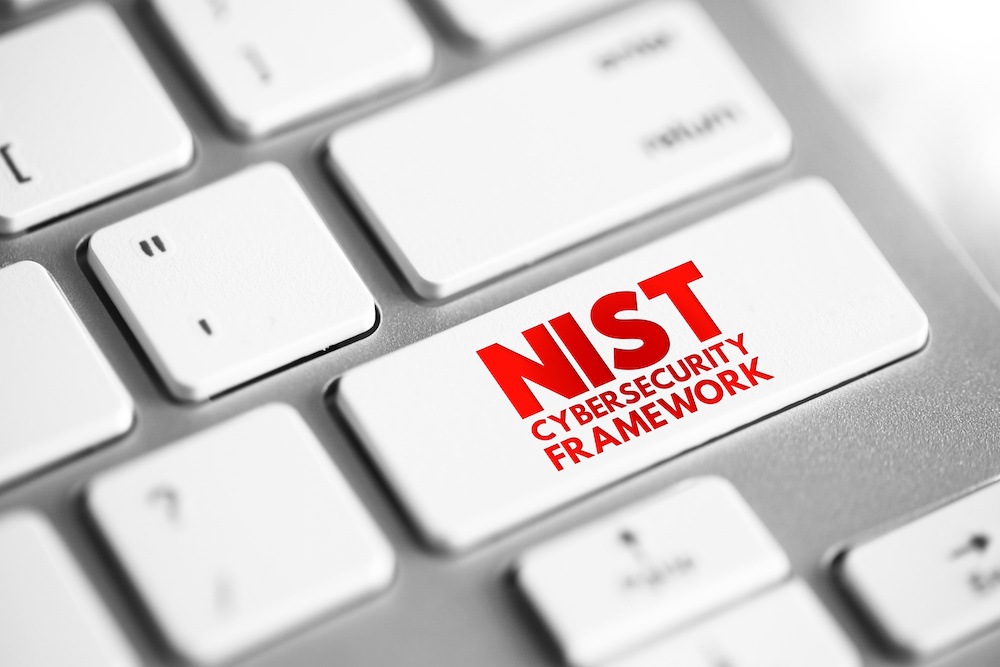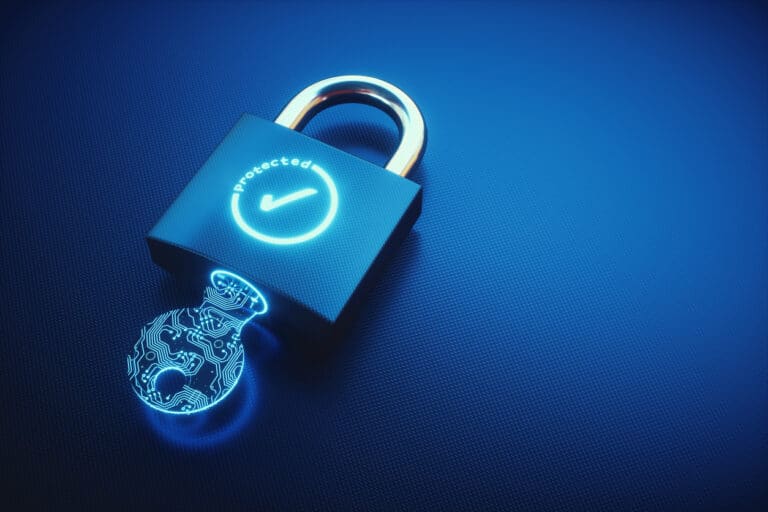Keeping your business safe and secure is a challenge. In 2023, 14% of small businesses in Canada experienced a cybersecurity incident. These incidents can result in financial losses, downtime, and damage to your reputation.
Working to standards can help you reduce risk and mitigate damage. The National Institute of Standards and Technology (NIST) provides standards that go beyond regulatory requirements in the U.S. and Canada. While an American organisation, using NIST standards for your cybersecurity helps ensure that you don’t have a breach or worse. It also brings you into a common framework with other companies and cybersecurity professionals, improving shared language and collaboration.
What are NIST Security Standards?
Founded in 1901, NIST started as a physical science laboratory to create a first-rate measurement infrastructure for U.S. industry. It has since expanded far beyond that, continuing to create measurement solutions, but supporting everything from electronic health records to earthquake-resistant skyscrapers.
In terms of cybersecurity, NIST has developed three frameworks: the cybersecurity framework, the privacy framework, and the risk management framework. These are comprehensive documents that set standards and best practices for companies of all sizes. The most recent is NIST Cybersecurity Framework CSF 2.0. The framework is designed to be flexible and usable by all kinds of companies and is not meant to be prescriptive. You use it by creating an organisational profile, but the CSF core lists best practices, including maintaining hardware and software inventories, using role-based access control, developing technology infrastructure resistance, etc.
Again, this isn’t a prescriptive list of “must dos” so much to understand best practices.
Who Uses NIST Standards?
NIST standards are not a regulatory requirement. However, they are commonly used by federal agencies and contractors across North America as well as private businesses. Anyone can use the NIST framework to improve their cybersecurity. Most cybersecurity professionals use NIST standards when assisting their customers.
Key Components of the NIST Cybersecurity Framework
The NIST Cybersecurity Framework centers around six key components:
- Govern: This includes your risk management strategy and expectations, and your overall policy regarding cybersecurity. Without an overall policy and strategy, efforts are likely to be scattershot and may even be counterproductive.
- Identify: This means knowing your assets and the risks associated with them, including the kind of data you are using and storing.
- Protect: Making safeguards and controls to reduce your risk and protect your data and infrastructure.
- Detect: Identifying security incidents quickly, in real time.
- Respond: Dealing with threats when they happen. This requires a lot of advanced warning.
- Recover: Strategies to restore operations after a breach. These often overlaps with recovery from a disaster, power outage, etc.

Benefits of Implementing NIST Standards
Again, NIST Standards are voluntary, not regulatory. However, you can get many benefits from adopting the NIST framework. The main one is that cyber professionals use it as a common language and understanding, comparing their performance with that of their peers. It allows professionals to objectively assess how they are doing. However, there are several other benefits, which include:
- Improved risk management and resilience: Lowering the risk of a breach protects you, your employees, and your customers. Knowing what to do when a breach happens reduces downtime and other consequences.
- A structured and scalable approach to cybersecurity: You can future-proof and growth-proof your efforts by abiding by the same standards as larger firms.
- Better compliance with regulatory requirements: NIST is voluntary but meets or exceeds federal standards in Canada.
- Increased trust from clients, partners, and stakeholders: Many of your stakeholders know what NIST is, so promising to abide by it can increase trust.
- Simplified incident response and recovery: NIST encourages the development of a solid disaster recovery plan that can help you recover from a cybersecurity incident and from other problems.
Real-World Applications for Businesses
Businesses of all kinds use the NIST CSF. CSF 2.0 is relatively new, but NIST has collected a variety of success stories for NIST CSF 1.1, the previous version. For example, the University of Kansas Medical Center was able to use NIST to improve integration of information security (fewer cases of having to say no).
Optic Cyber Solutions, a small business in Maryland that provides cybersecurity consulting services switched to NIST and was able to improve their own culture of cybersecurity and then foster it in their clients. It helps enable improved collaboration between executives and cybersecurity practitioners.
Hospitals use NIST to help them protect patients and align with HIPAA. Retail uses it to protect customer data and avoid embarrassing breaches. NIST standards align with U.S. regulatory standards such as PCI-DSS and CMMC, which are often used in Canada.
Getting Started with NIST Standards
For a small or medium-sized business, NIST Standards can be a little bit overwhelming. Fortunately, there are some easy ways to get started.
The first step is to set up your organisational profiles. Templates are available from NIST as Excel files. You need two profiles:
- Current profile: This is an audit of where your organisation is in terms of cybersecurity. It compares your current cybersecurity strategy to the CSF outcomes.
- Target profile: This is where you want to be. You select your desired CSF outcomes and consider anticipated changes, such as new Canadian regulations, technology, or threats.
Once you have those profiles, you do a gap analysis so you can develop an action plan to get from 1 to 2. This plan should be comprehensive and prioritized. By breaking your goal down into manageable pieces, it becomes a lot less intimidating.
For auditing your current cybersecurity status, there are a variety of assessment tools available. Some of these are industry-specific, but the Baldridge Cybersecurity Excellence Builder helps all organisations understand how effective their risk management efforts are and identify areas to improve.
Once your plan is in place, you need to engage in continuous improvement efforts, always monitoring and updating to consider growth and new threats.
Challenges and Misconceptions
One big misconception is that NIST is only for government agencies and only relevant in the U.S. In fact, NIST standards are used internationally by all kinds of businesses.
However, the big challenge is resource constraints. Smaller businesses may not have the in-house IT team they need to fully implement the CSF, even with flexibility. Also, it can be complex and hard to understand.
For most smaller businesses the solution to both challenges are a simple one, seek help. A high-quality cybersecurity consultant can (and will) use NIST principles to improve your cybersecurity.
NIST cybersecurity standards can help your business work better with cybersecurity professionals, improve your risk management and resilience, comply with regulatory requirements, and build trust with stakeholders.
You need to start with a solid risk assessment and build from there. Don’t know where to start? Contact us today to discuss your cybersecurity needs.







